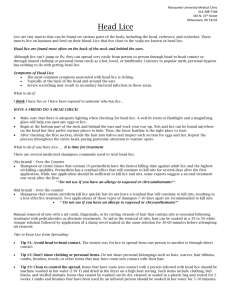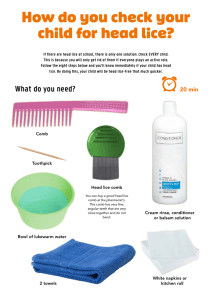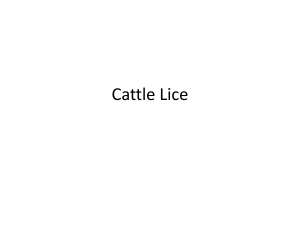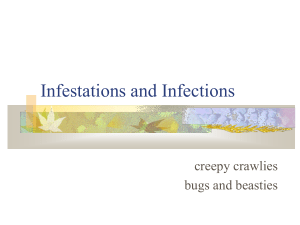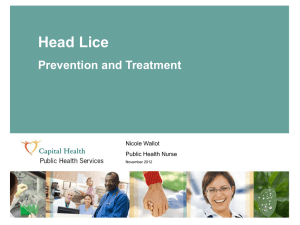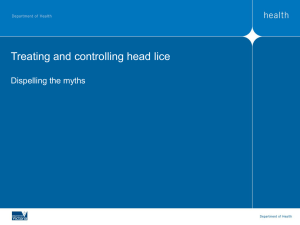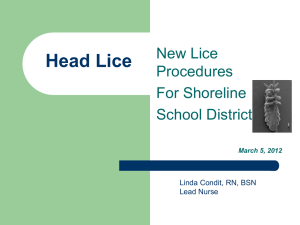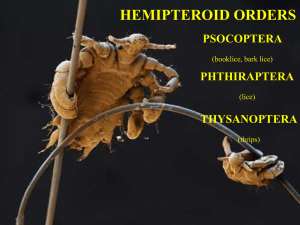Head Lice PowerPoint
advertisement
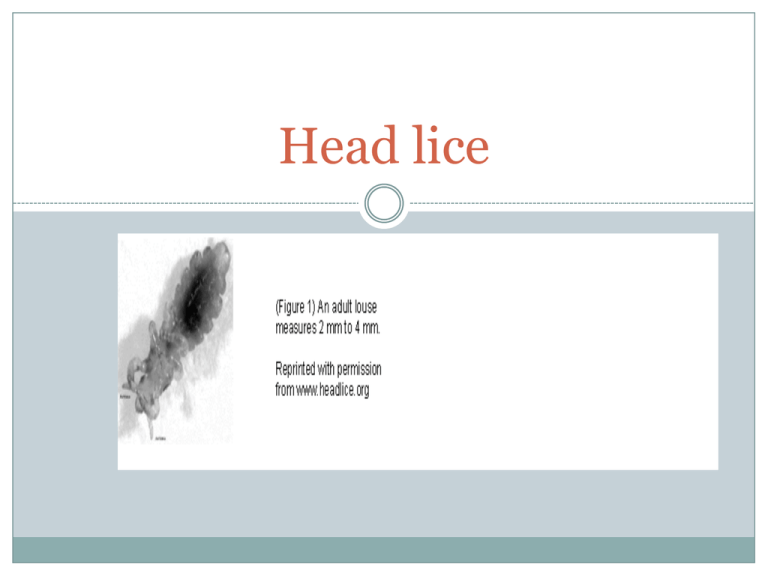
Head lice Life Cycle How Is Head Lice Spread? Head lice spread through direct contact among children (head-to-head), or indirectly on items such as: hats, combs, hairbrushes, headbands, helmets, and toques. How to Prevent the Spread of Head Lice Check your child’s head regularly: 1. once a week as part of your routine 2. after every sleepover 3. every day during lice outbreaks at school Keep long hair tied back or braided. Teach your child not to share personal items that are used on their head: • things like brushes, combs, barrettes, headbands, elastics, towels, hats, helmets, toques, and scarves. • Teach your child to put their hats and scarves in their coat sleeves or backpacks when they take them off at school. •If your child has been in contact with someone who has lice, you need to check your child’s head carefully to see if they have caught lice. •Head lice spread easily, so if one person in the household has lice, others may have it too. Check on the same day. How do I check for head lice? To confirm a case of head lice, you need to find live lice. Children can have a few nits without actually having a case of head lice. Usually children have no more than 10 to 20 live lice. Good lighting is important when you are checking. Head lice move fast and are hard to see. They are usually found very close to the scalp, at the bottom of the neck and behind the ears. To look for nits, part hair in small sections, moving from one side of the head to the other. Check carefully, looking close to the scalp. How can head lice be treated? Insecticides are chemicals that kill insects (bugs). Public Health Services recommends pyrethrin (found in R&C Shampoo, Pronto, Equate, or Licetrol.) Permethrin with piperonyl butoxide (Nix Creme Rinse or Kwellada-P Creme Rinse) Combs, lice comb & regular comb Household clean up Check and treat all family members The trick to getting rid of head lice Daily Combing! You must comb daily between the 1st and 2nd treatment. Why you ask? Because the 1st treatment did not kill all the nits. Combing daily will remove any new lice that hatch. ( if not removed, they lay more nits in 9-15 days) HRSB School Policy (2011) p.2 The Principal shall: Notify the parents /guardians of the suspicion that the student has head lice; Students who are suspected of nits may remain at school. Students who are suspected of having live lice will be sent home for treatment with parents/guardians. Etc…… Should children with head lice stay home from school? Children with head lice should be treated and can attend school or child care as usual. ‘No-nit’ policies that keep children with head lice away from school are not necessary because: Head lice are common among young children. Head lice don’t spread disease. Cases of head lice are often misdiagnosed. Children can have head lice for several weeks with no symptoms. Over 75% of children with nits close to scalp and no live lice, do not develop active infestation Take home message…. •If your child has head lice, treat it. •Teach your child to avoid head-to-head contact with other children until the lice are gone. •Children should not share combs, hairbrushes, caps, hats or hair ornaments. •Check your child’s head regularly! Links http://www.caringforkids.cps.ca/handouts/head_lic e http://www.gov.ns.ca/hpp/publications/07135_hea dlicepamphlet_en.pdf http://www.gov.ns.ca/hpp/publications/Head_Lice _Guidelines_for_Treatment.pdf http://www.hrsb.ns.ca/files/downloads/pdf/board/ policy/sectionb/b.005-head-lice.pdf www.cdha.nshealth.ca/public-health/links

